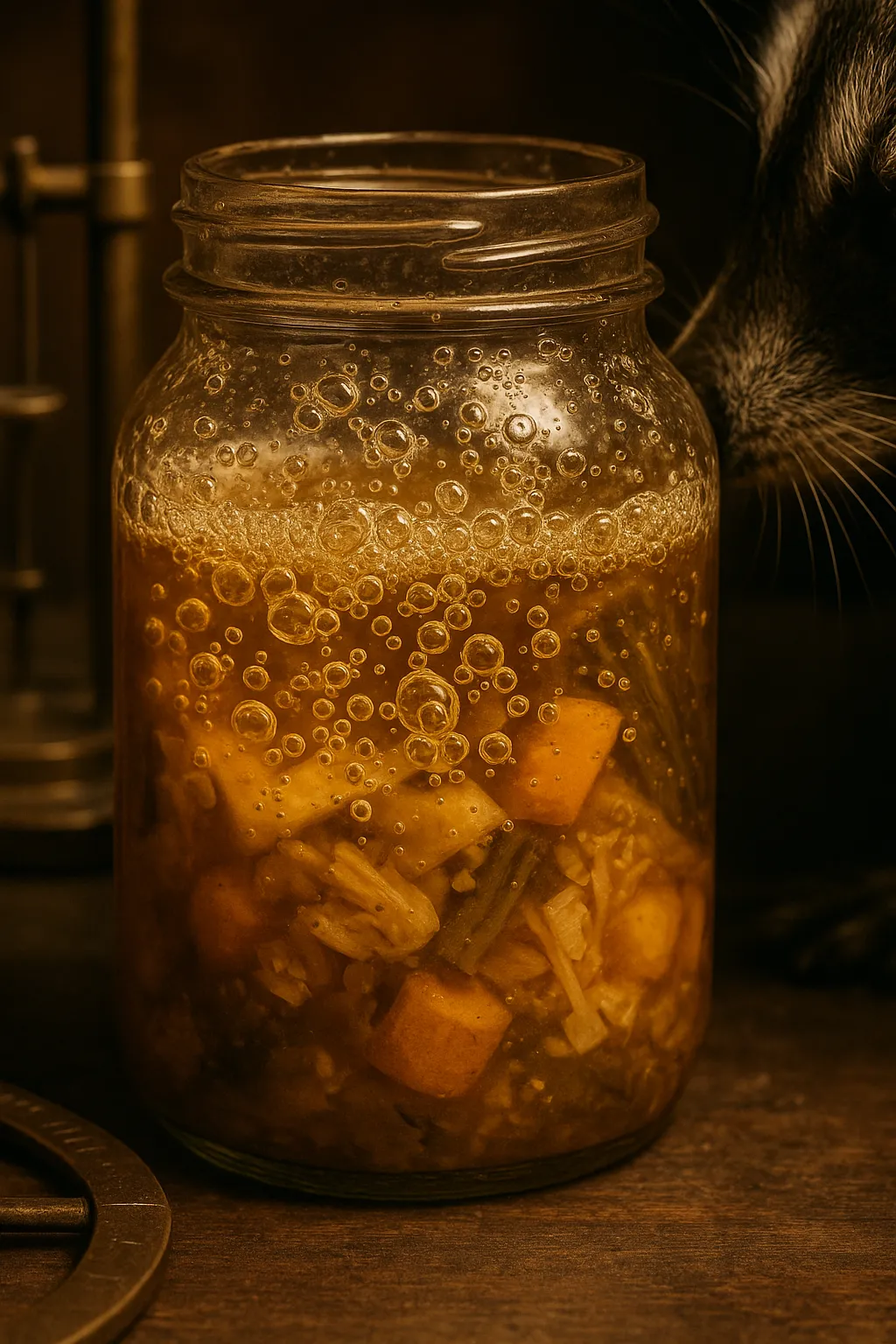technique
Fermentation Journey

Raccook
December 6, 2024
5min read

Controlled chaos in a jar—that's what fermentation really is. Give salt, time, and beneficial bacteria some vegetables to work with, and they'll create flavors that taste both ancient and impossible, from funky Korean kimchi to tangy German sauerkraut. It's alchemy that any curious cook can master.
Basic Fermentation Principles
Fermentation relies on beneficial bacteria and yeasts that consume sugars and produce acids, alcohols, or gases. These byproducts preserve food naturally while developing new flavors and textures.
Salt concentration controls which microorganisms thrive. Higher salt levels favor beneficial bacteria over harmful ones, creating safe fermentation environments. Different salt percentages produce different flavor profiles and textures.
Temperature affects fermentation speed and final results. Cooler temperatures slow fermentation, allowing more complex flavor development. Warmer conditions speed the process but may produce less nuanced results.

Vegetable Fermentation
Sauerkraut and kimchi represent two major approaches to vegetable fermentation. Homemade Sauerkraut shows how simple cabbage and salt can create complex flavors through lacto-fermentation, relying on naturally present bacteria. Korean Kimchi incorporates additional ingredients like garlic, ginger, and chilies for more complex flavors, demonstrating how fermentation can create both preservation and bold taste profiles.
Proper vegetable preparation ensures successful fermentation. Vegetables must be cut to appropriate sizes for even salt distribution. Adequate salt draws out moisture, creating the brine necessary for anaerobic fermentation. Vietnamese Pickled Vegetables demonstrates quick fermentation techniques that preserve crisp textures while developing tangy flavors.
Salt fermentation extends beyond vegetables to citrus preservation. Preserved Lemons showcases how salt transforms lemon rinds into silky, intensely flavored condiments essential to North African cuisine. The same salt-fermentation principles apply across many ingredients.
Fermentation vessels require careful selection. Wide-mouth jars allow easy monitoring and stirring. Fermentation weights keep vegetables submerged below brine level, preventing mold growth and ensuring proper anaerobic conditions.

Dairy Fermentation
Yogurt and kefir fermentation transforms milk proteins and sugars into tangy, probiotic-rich foods. Different bacterial cultures produce distinct flavors and textures. Temperature control during fermentation affects final consistency and taste.
Cheese making involves more complex fermentation processes, often requiring specific bacterial cultures and aging conditions. Fresh cheeses like ricotta ferment quickly, while aged varieties develop over months or years.
Fermented dairy products appear across cultures - from Middle Eastern labneh to Scandinavian filmjölk. Each tradition developed techniques suited to local milk sources and climate conditions.
Grain and Legume Fermentation
Sourdough Starter Guide explains how wild yeast and bacteria captured from the environment create the foundation for artisan bread. Maintaining a sourdough starter requires regular feeding and proper hydration ratios. Different flours and feeding schedules create distinct flavor profiles, making each starter unique to its environment and care routine.
Asian cuisines use fermentation extensively for grain and legume preparations. Fermented rice batters create South Indian dosa and idli. Fermented soybean products like miso and tempeh provide umami-rich protein sources. Ethiopian Injera Doro Wat showcases how fermented teff creates the distinctive spongy texture essential to Ethiopian cuisine.
Fermentation timing varies significantly by application. Quick fermentations like overnight dosa batter differ from long-term processes like aged miso, which can ferment for years. Fermented Salsa represents a middle ground, developing complex flavors over several days while maintaining fresh vegetable textures.

Fermented Beverages
Cultured drinks offer another fermentation avenue beyond traditional foods. Kombucha Brewing demonstrates how tea and sugar transform through SCOBY fermentation into probiotic-rich beverages with endless flavor possibilities. Water Kefir provides a lighter alternative using crystalline grains that ferment sugar water into naturally carbonated drinks.
These fermented beverages showcase fermentation's versatility — the same biological processes that preserve vegetables can create refreshing, healthful drinks. Both methods rely on symbiotic cultures that multiply and can be shared within fermentation communities.

Fermentation Troubleshooting
Common fermentation problems include mold growth, off-flavors, and texture issues. Most problems stem from improper salt ratios, temperature control, or sanitation. Understanding these factors helps prevent failed batches.
Visual and sensory cues indicate fermentation progress. Proper fermentation produces pleasant sour aromas and consistent textures. Off-putting smells or unusual colors often signal problems requiring attention.
pH testing provides objective fermentation monitoring. Successful vegetable fermentation typically reaches pH levels below 4.6, creating environments hostile to harmful bacteria while maintaining beneficial fermentation.
Safety Considerations
Fermentation safety depends on proper technique and understanding basic principles. High-acid environments created by successful fermentation prevent harmful bacterial growth naturally.
Certain foods require special consideration for safe fermentation. Low-acid vegetables may need vinegar additions or specific processing methods. Understanding these requirements prevents foodborne illness risks. German Sauerbraten demonstrates how acidic marinades create both flavor development and safe preservation for meat preparations.
Equipment sanitation remains important despite fermentation's natural preservation properties. Clean tools and vessels provide better starting conditions for beneficial microorganisms to establish dominance.

Connecting Fermentation Knowledge
Fermentation principles apply across many cuisines discussed in other articles. Understanding fish sauce production enhances appreciation for Vietnamese preparations like Vietnamese Pho Ga and Banh Mi, where fermented elements provide umami depth. Knowledge of cheese aging connects to dishes like Italian Cacio e Pepe, where aged pecorino's fermentation history contributes to complex flavors.
Salt's role in fermentation relates directly to Salt Stories preservation applications. The patience required for proper fermentation mirrors slow cooking techniques found in Moroccan Cuisine Guide preparations.
Fermentation creates ingredients that become building blocks for other dishes, demonstrating how traditional preservation methods continue to influence modern cooking approaches.








